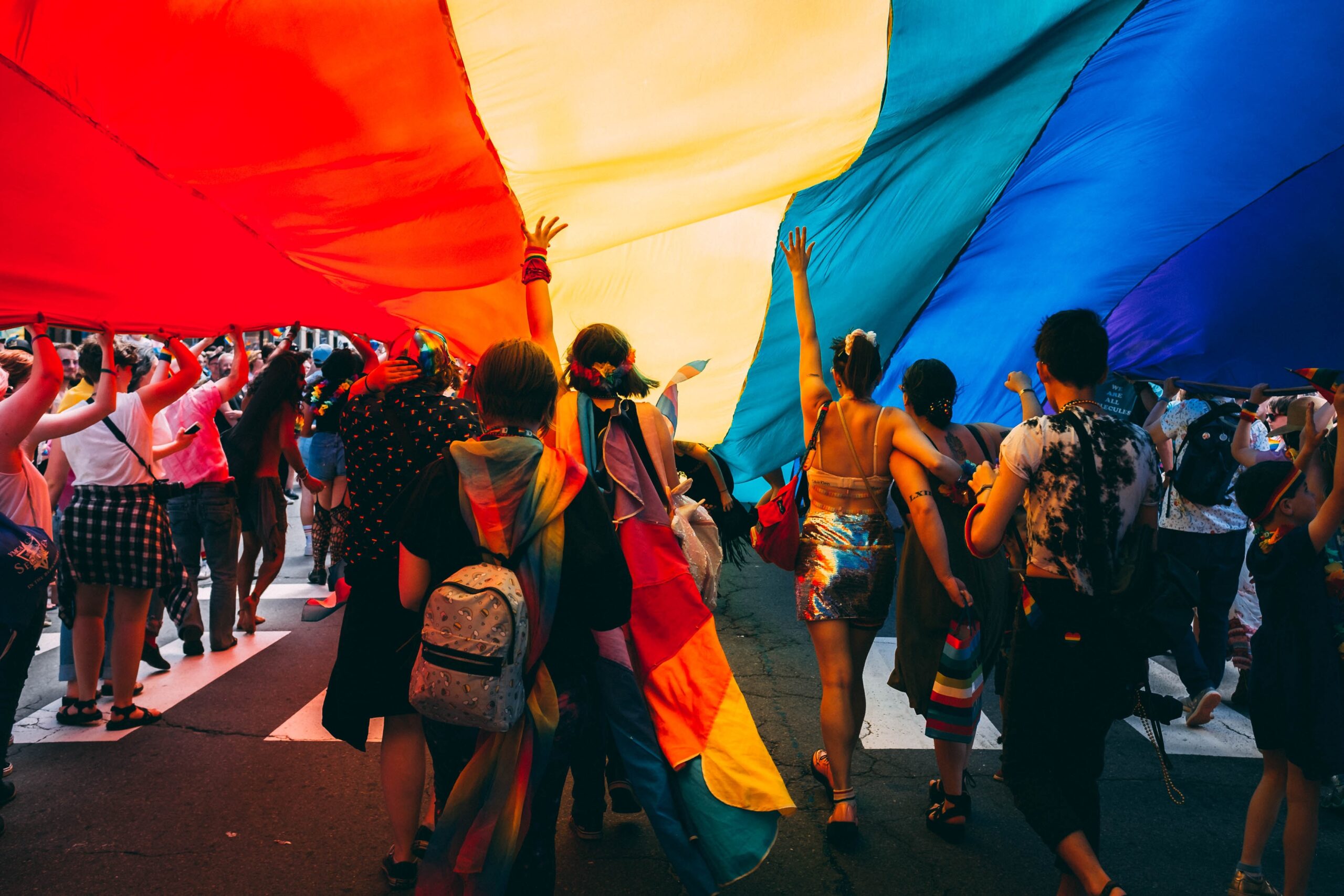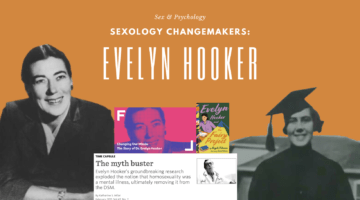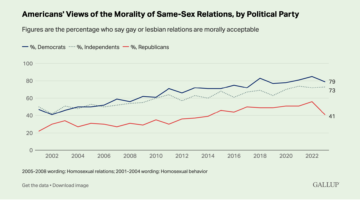National Coming Out Day 2023: LGBTQ+ Research Round-Up
October 11, 2023 by Emily Mendelson
In 1988, psychologist Dr. Rob Eichberg co-founded the “Coming Out Day” holiday with Jean O’Leary. The original concept behind this holiday is that most people who think they don’t know anyone who is gay or lesbian probably do. And, so, if more people came out, this might help to dispel fears and stereotypes about sexual minorities. Coming Out Day affirms the idea that living one’s life openly and authentically can help combat the homophobia that thrives when sexual minorities are invisible. Over the years, National Coming Out Day has expanded to include anyone “coming out of the closet” in the LGBTQ+ community.
In honor of National Coming Out Day, below is a collection of just some of the research on LGBTQ+ individuals from around the world that was published in The Journal of Sex Research in the past year.
[1] More people are coming out as bisexual than ever before
Researchers from the University of Portland utilized nationally representative U.S. data from the General Social Survey in order to understand how sexuality identification has changed from 1989 to 2021. Generally speaking, far more individuals are identifying as bisexual today than ever before. Interestingly, however, only about half of the women in this study who have had sex with both men and women identified themselves as bisexual, which further highlights how sexual identity and sexual behavior do not always line up in ways that might be expected.
[2] Dating apps are important for transgender individuals, but should be used with caution
As technology integrates more and more with our daily lives, dating applications are increasingly common ways to meet both platonic and romantic partners. Through a series of interviews with transgender and nonbinary individuals, researchers from the University of Southampton in England found that dating apps are an important tool for members of this population to connect with other queer individuals, whether those connections are platonic, romanic, and/or sexual. However, dating applications still pose risks for trans and nonbinary individuals, such as harassment and fetishization. Accordingly, ensuring the safety of trans and nonbinary individuals must be understood as paramount to dating application developers.
[3] Asexuality is a stable sexual orientation for asexual individuals
One of the most common myths about asexuality is that it is “just a phase.” Not only does this myth discredit the lived experiences of asexual people, it also further stigmatizes asexuality as something that is not a “real” sexual orientation. However, through a three-year longitudinal data collection process, researchers from Southwest University in China found that asexual individuals who reported low sexual attraction maintained this low sexual attraction throughout the three years of data collection. The authors argue that this stability further supports asexuality as a sexual orientation that should be seen as valid, legitimate, and stable across one’s life.
[4] Queer young adults have a variety of hookup motives
We know a lot about the hookup motives of straight individuals, but what about the motives of LGBTQ+ young adults? Researchers from institutions across the United States conducted interviews with dozens of LGBTQ+ individuals to find out. As it turns out, there are differences! One of the most interesting findings is that LGBTQ+ young adults are not just motivated to hookup with others to pleasure themselves (like heterosexual individuals report), but to pleasure their sexual partners. This points to a need to better understand the sexual motivations of queer youth that do not rely on heterosexual scripts of hooking up.
[5] Your “bidar” may be worse than you think
Many individuals appear to be confident that they can guess if a man is straight or gay by the sound of his voice. But can they guess if he is bisexual? It appears not, even if individuals are confident in their ability to do so. Researchers from the University of Sydney in Australia tested this hypothesis, and found that bisexual men’s voices were constantly misperceived by individuals as being exclusively female-attracted. In fact, bisexual voices were perceived as the most masculine sounding of all men’s voices! This research demonstrates how some of the assumptions people have about bisexual men are based on inaccurate stereotypes. You can read more about this study in one of our previous blog posts here.
[6] TGNB pornography can be both empowering, yet dysphoric for TGNB porn viewers
Transgender and nonbinary individuals (TGNB) are often depicted in pornographic material. In fact, searches for “gender” grew by +75% on PornHub in 2022, and “transgender” was the #1 most-viewed category in Brazil, and the #3 most-viewed category in the United States and Italy. Despite the popularity of TGNB identities that are (often fetishized) in pornographic material, we know little about how TGNB individuals consume pornography. However, in a study conducted by researchers at the University of Milan in Italy, qualitative analysis of the sensations TGNB individuals experience when watching pornography revealed that while pleasurable experiences of watching TGNB pornography are common, this can also be met with negative experiences of objectification and dysphoria for TGNB individuals.
[7] Resources for research on LGBTQ+ individuals have expanded
This one isn’t from the Journal of Sex Research, but it’s noteworthy in its own right: the Harvey Milk Institute recently published The Harvey Milk Institute Guide to Lesbian, Gay, Bisexual, Transgender, and Queer Internet Research, which includes comprehensive lists of resources that compile URLs for LGBTQ+ message boards, search engines, and online portals. The book also includes in-depth interviews with individuals who are formative within queer internet spaces, and provides additional tools for researchers across a variety of disciplines. You can order the book here.
These are just a few of the latest publications that center on the experiences of LGBTQ+ individuals in the past year. In the spirit of Coming Out Day, we encourage you to read, share, and learn with your network to open more conversations and further advance research on human sexuality.
Is there a new study about LGBTQ+ individuals that you want to highlight? Let us know in the comments below!
Want to learn more about Sex and Psychology? Click here for more from the blog or here to listen to the podcast. Follow Sex and Psychology on Facebook, Twitter (@JustinLehmiller), or Reddit to receive updates. You can also follow Dr. Lehmiller on YouTube and Instagram.
References
[1]: Monto, M. A., & Neuweiler, S. (2023). The rise of bisexuality: U.S. representative data show an increase over time in bisexual identity and persons reporting sex with both women and men. The Journal of Sex Research, 0(0), 1–14. https://doi.org/10.1080/00224499.2023.2225176
[2]: Griffiths, D. A., & Armstrong, H. L. (2023). “They were talking to an idea they had about me”: A qualitative analysis of transgender individuals’ experiences using dating apps. The Journal of Sex Research, 0(0), 1–14. https://doi.org/10.1080/00224499.2023.2176422
[3]: Su, Y., & Zheng, L. (2023). Stability and change in asexuality: Relationship between sexual/romantic attraction and sexual desire. The Journal of Sex Research, 60(2), 231–241. https://doi.org/10.1080/00224499.2022.2045889
[4]: Snapp, S., Ching, T. H. W., Miranda-Ramirez, M. A., Gallik, C., Duenaz, U., & Watson, R. J. (2023). Queering hookup motives in a diverse sample of LGBTQ+ young adults. The Journal of Sex Research, 0(0), 1–11. https://doi.org/10.1080/00224499.2023.2183175
[5]: Morandini, J. S., Beckman-Scott, D., Madill, C., & Dar-Nimrod, I. (2023). Bidar: Can listeners detect if a man is bisexual from his voice alone? The Journal of Sex Research, 60(5), 611–623. https://doi.org/10.1080/00224499.2023.2182267
[6]: Pavanello Decaro, S., Portolani, D. M., Toffoli, G., Prunas, A., & Anzani, A. (2023). “There is no one way to be transgender and to live sex”: Transgender and non-binary individuals’ experiences with pornography. The Journal of Sex Research, 0(0), 1–11. https://doi.org/10.1080/00224499.2023.2215228
[7]: Ellis, A. L., White, M., & Schaub, K. (2023). The Harvey Milk Institute guide to lesbian, gay, bisexual, transgender, and queer internet research. CRC Press.
Image credits: Mercedes Mehling via Unsplash

Dr. Justin Lehmiller
Founder & Owner of Sex and PsychologyDr. Justin Lehmiller is a social psychologist and Research Fellow at The Kinsey Institute. He runs the Sex and Psychology blog and podcast and is author of the popular book Tell Me What You Want. Dr. Lehmiller is an award-winning educator, and a prolific researcher who has published more than 50 academic works.
Read full bio >


